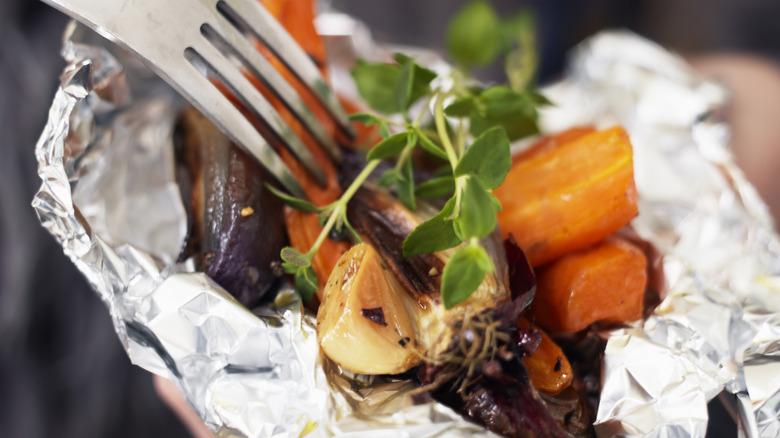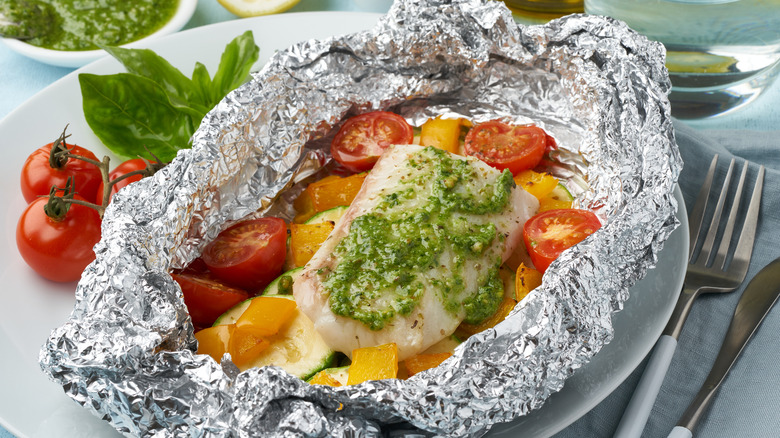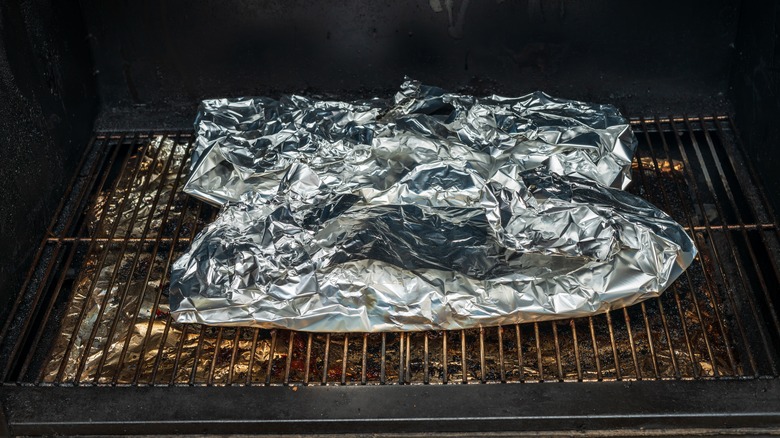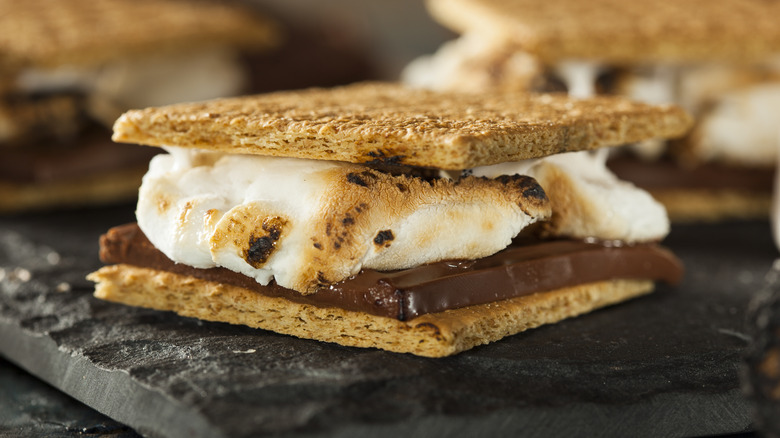Wrap-And-Cook Foil Dinners Make Weeknights So Much Easier
Weeknight dinners can be a challenge during a busy work or school week. The last thing anyone wants to do after a long day is make a big dinner and then clean up after. The fatigue is probably setting in just thinking about it, which is why you need to embrace wrap-and-cook foil dinners. This is one of the many aluminum foil hacks that will make your time in the kitchen a breeze.
Wrap-and-cook foil dinners lock in moisture, especially with tender cuts of meat and fish. To get started, take a piece of foil that is about 24 inches in length. Give the foil a coat of cooking spray and place a protein of choice and veggies on it. Sprinkle your ingredients with seasonings, drizzle some oil, and wrap it all up before cooking on a grill or in the oven.
If you are cooking them in the oven, set the temperature to 400 degrees Fahrenheit, place the foil packets on a baking sheet, and cook for about 30 to 40 minutes. If you prefer to put your packets on the grill, you want to heat it to about 425 to 450 degrees Fahrenheit. Grill cooking requires between 20 and 30 minutes and they will need to be flipped halfway through the cooking process.
How to cook evenly
What goes into these meals? A traditional wrap-and-cook foil dinner uses onions, potatoes, and carrots, along with ground beef or sausage, but you can use whatever ingredients you want with this cooking method. There are just a few things to consider with the first being your choice of protein.
Chicken, pork, beef, and fish are all good choices, but some foods cook quicker than others, including delicate pieces of fish. For this reason, you want to make certain that the filets you choose are uniform in size so each packet cooks at about the same rate. Consistency in size and thickness is important for whatever protein you choose if you want everyone eating at about the same time. That said, if there's one meat you don't want to use in these packets, it's steak. This cut of meat is all about the sear and you will not get that in a foil packet.
Vegetable choice is also important. Veggies with a high water content like bell peppers, tomatoes, and zucchini will help keep your meat tender and juicy. If you choose root vegetables like potatoes, carrots, or turnips, you can zap them in the microwave or even blanch them so they get a head start and cook at the same rate as the less hearty vegetables you might pair them with. If you are slicing your chosen veggies, it's best to do so by creating small, uniform cuts. This will help ensure an even cook. What you will love about these meals is you can eat them right out of the tin foil, with no plating required.
Seal your packets tightly
And one more word of caution about your veggie selection. If you are working with a meat that releases a lot of moisture like chicken or pork chops, you want to match these proteins with starch-rich vegetables, otherwise you might end up with a mushy mess. And save the fresh herbs to finish these packets after they have cooked.
When you assemble your wrap-and-cook foil dinners it's imperative you seal the foil packet up tight so no liquid can drip out. Not only will you lose moisture if you don't, you will end up with less flavor. A heavy-duty foil will serve you well, but even if you do not use heavy-duty, do not wrap your packets more than once or they may take longer to cook.
How can you tell if your food is fully cooked? If one packet has a larger piece of meat than the other, you could mark this packet with a sharpie. Open it when you your food has reached its cook time and test the meat's internal temperature with a meat thermometer. Only open the packet once to check on its cooking progress. Do it more than that and you are letting precious steam escape which means you will be waiting longer for it to cook.
Wrap-and-cook foil meal inspiration
One of the many perks of making these wrap-and-cook foil meals is how creative you can get. Feeling like you need a taste of New Orleans? Make a Cajun shrimp meal using shrimp, sausage, shrimp, corn, potatoes, and Cajun spices, or fill your foil with ingredients for foil-baked cod with oranges, scallions, and ginger. This cooking method makes for some delicious, succulent seafood.
If chicken is on the menu, try curried chicken roasting packs. Making Kielbasa, peppers, and onions? Leave your meat whole or chop up your ingredients, toss them with some olive oil, oregano, and whatever seasonings you wish and get ready for flavor overload. Just remember to have some type of sauce like ketchup, cheese, or barbecue sauce available for dipping.
But don't limit yourself to dinner. This cooking method works for dessert too. Fill your foil packets with broken pieces of graham crackers, mini marshmallows, and pieces of chocolate for a fun take on a classic s'more, or cut up some fruit and drizzle with caramel sauce. The possibilities are endless.



